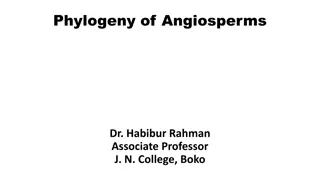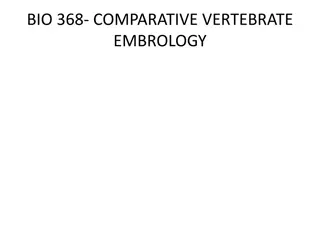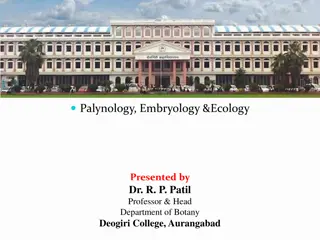
Arachnids Diversity: A Fascinating Look into Various Species
Explore the diverse world of arachnids, including Palpigradi, Araneae, Amblypygi, Thelyphonida, and Schizomida. From microwhip scorpions to tailless whip scorpions, these creatures exhibit unique characteristics and adaptations. Discover their habitats, behaviors, and evolutionary relationships. Delve into the intriguing world of arachnids through this informative content.
Download Presentation

Please find below an Image/Link to download the presentation.
The content on the website is provided AS IS for your information and personal use only. It may not be sold, licensed, or shared on other websites without obtaining consent from the author. If you encounter any issues during the download, it is possible that the publisher has removed the file from their server.
You are allowed to download the files provided on this website for personal or commercial use, subject to the condition that they are used lawfully. All files are the property of their respective owners.
The content on the website is provided AS IS for your information and personal use only. It may not be sold, licensed, or shared on other websites without obtaining consent from the author.
E N D
Presentation Transcript
Phylogeny of Aracnida Anthony Rich
https://www.google.com/url?sa=i&rct=j&q=&esrc=s&source=images&cd=&cad=rja&uact=8&ved=0ahUKEwido_uN2sXXAhUJ4SYKHhttps://www.google.com/url?sa=i&rct=j&q=&esrc=s&source=images&cd=&cad=rja&uact=8&ved=0ahUKEwido_uN2sXXAhUJ4SYKH QS1At0QjRwIBw&url=http%3A%2F%2Ftolweb.org%2Ftolarchive%2F2536%2F19950101%2FArachnida.html&psig=AOvVaw11REo3qSsdj RgMnGIXSafo&ust=1511011253195788
Palpigradi Microwhip Scorpions 3mm in length or less Segmented, thin carapace that ends in a whip- like flagellum 15 segments No eyes Three pairs of book lungs or no respiratory organs at all (Species dependent) About 80 species of Palpigradi Damp environment to survive https://en.wikipedia.org/wiki/File:Live_Eukoenenia_spelaea_in_its_cave_habitat.png Can be found any where on the planet Not the artic or Anarctica
Aranae 40,000 species approximately All spiders produce silk (Their Web) Silk can be used for: Catching insects in their web Some are active predators Aid in climbing Make egg sacs Wrap up their prey Hold sperm Fly About 350 species do not have venom Can be found anywhere on the planet Some species can be found under water https://en.wikipedia.org/wiki/File:Araneus_diadematus_(aka).jpg
Amblypygi Tailless whip scorpions/Cave spiders 136 species Found in tropical and subtropical environments Range from 5mm to 40mm Front legs are sensory organs Move sideways with whip leading the way Use the whip to locate prey Can have social interactions with in the species. If siblings are placed in an unknown environment they will seek each other out.
Thelyphonida Vinegarroons/Whip Scorpions 25mm to 85mm in length Six legs for walking Front two turned into sensory organs (antennae) Many have pincers like scorpions One pair of eyes on cephalothorax and three on each side of the head Chemical defenses Spray acetic acid, octanoic acid, formic acid or chlorine Carnivores Tropical and subtropical regions found in humid dark places https://en.wikipedia.org/wiki/File:Whipscorpion.jpg
Schizomida Live in the top layer of soil No eyes Name stands for split or cleaved middle Cephalothorax is divided into two separate parts Six legs for walking First two legs as sensory organs Well developed pincers behind the sensory legs https://en.wikipedia.org/wiki/File:Hubbardia_pentapeltis_female.jpg
Ricinulei Hooded tickspiders 5-10mm in length Most noticeable feature is their hood that they can raise and lower over their head No eyes Small pincers compared to body size compared to other aracnids No lungs, gas exchange takes place in the trachea Predators 57 species are described around the world https://en.wikipedia.org/wiki/File:Cryptocellus_goodnighti.jpg
https://en.wikipedia.org/wi ki/File:Trombidium_holoseri ceum_(aka).jpg Acari Mites and Ticks 1mm or smaller in size 50,000 species have been reported around the world but believed to be a million of more living Live in almost environment Terrestrial Aquatic (fresh and salt water) Many are parasitic and will feed on vertebrates and invertebrates Others are detritivores or herbivores https://en.wikipedia.org/wiki/File:Ixodes_h exagonus_(aka).jpg
Opiliones Harvestmen/Daddy Longlegs Harmless to humans 6,500 species discovered Two main body sections are nearly jointed looking as if one structure differentiates from spiders Single pair of eyes Second pair of legs act as antennae https://en.wikipedia.org/wiki/File:Harvestman_opilio_canestrinii_male_6.jpg Chemical defenses (scent glands) Respiration by trachea. No lungs Body length does not exceed 7mm Omnivors
Scorpionida Scorpions Metasoma (tail) has six segments Last segment has anus and telson (stinger) Cuticles sometimes covered in hairs and act as balance organs Hyaline layer is responsible for glowing under UV light Opportunistic predators https://en.wikipedia.org/wiki/File:SCORPIO_MAURUS_PALMATUS.jpg
Pseudoscorpiones Mini scorpions 2 to 8 mm long 12 segments protected by plates Can have 2,4, or no eyes Spin silk for mating, waiting out cold weather or molting Do not have book lungs 2,000 species Range from temperate to cold regions Mainly located in the tropics and subtropics Carnivores https://en.wikipedia.org/wiki/File:Ar_1.jpg
Solifugae Camel spiders, wind scorpions, and sun spiders 900 species Name means Those who flee from the sun Live in tropical or semi-tropical regions Some species live in grasslands or forests distinctive feature is their large chelicerae Long pedipalps function as sensory organs Can be carnivores or omnivores https://en.wikipedia.org/wiki/File:Galeodes.jpg
Sources Walter, D.E. & Proctor, H.C. (1999). Mites: Ecology, Evolution and Behaviour. University of New South Wales Press, Sydney and CAB International, Wallingford. ISBN 0-86840-529-9. Levi, Herbert W. (1967). "Adaptations of respiratory systems of spiders". Evolution. 21 (3): 571 583. doi:10.2307/2406617. JSTOR 2406617. desert scorpion Hadrurus arizonensis" (PDF). Journal of Experimental Biology. 53 (3): 547 558. PMID 5487163. Jacobs, Steve (August 2006). "Entomological Notes: Pseudoscorpion Fact Sheet". Pennsylvania State University, Department of Entomology. Hoshino, K.; Moura, A.T.V. & de Paula, H.M.G. (2006). "Selection of environmental temperature by the yellow scorpion Tityus serrulatus Lutz & Mello, 1922 (Scorpiones, Buthidae)" (PDF). Journal of Venomous Animals and Toxins including Tropical Diseases. 12 (1): 59 66. doi:10.1590/S1678-91992006000100005. Bryner, Jeanna (March 19, 2007). "Creepy: Spiders Love to Snuggle". LiveScience. Norman I. Platnick (2009). "The World Spider Catalog, version 9.5". American Museum of Natural History. Retrieved 2009-04-25. Weygoldt, Peter (1966). "Spermatophore Web Formation in a Pseudoscorpion". Science. 153 (3744): 1647 1649. doi:10.1126/science.153.3744.1647. PMID 17802636. Diaz, James H. (2004). "The global epidemiology, syndromic classification, management, and prevention of spider bites". American Journal of Tropical Medicine and Hygiene. 71 (2): 239 250. PMID 15306718. Garwood, Russell J. & Dunlop, Jason A. (2010). "Fossils Explained: Trigonotarbids". Geology Today. 26 (1): 34 37. doi:10.1111/j.1365- 2451.2010.00742.x. Retrieved 2015-06-12. Proctor, Heather C. (1993). "Mating Biology Resolves Trichotomy for Cheliferoid Pseudoscorpions (Pseudoscorpionida, Cheliferoidea)" (PDF). Journal of Arachnology. American Arachnological Society. 21 (2): 156 158. Garwood, Russell J.; Dunlop, Jason A. (2014). "Three-dimensional reconstruction and the phylogeny of extinct chelicerate orders". PeerJ. 2: e641. doi:10.7717/peerj.641. PMC 4232842Freely accessible. PMID 25405073. Retrieved 2015-06-15. Kury, Adriano B. (2011). "Order Opiliones Sundevall, 1833" (PDF). In Z.-Q. Zhang. Animal biodiversity: an outline of higher-level classification and survey of taxonomic richness. Zootaxa. 4138. pp. 112 114 Cheng, David (June 23, 2005). "Scorpion sting". eMedicine. Machado, Glauco; Pinto-da-Rocha, Ricardo & Giribet, Gonzalo (2007). "What are harvestmen?". In Pinto-da-Rocha, Ricardo; Machado, Glauco & Giribet, Gonzalo. Harvestmen: the Biology of Opiliones. Harvard University Press. pp. 1 13. ISBN 0-674-02343-9. Rein, Jan Ove (1993). "Sting use in two species of Parabuthus scorpions (Buthidae)" (PDF). Journal of Arachnology. 21: 60 63. Garwood, Russell J. & Dunlop, Jason A. (July 2014). "The walking dead: Blender as a tool for paleontologists with a case study on extinct arachnids". Journal of Paleontology. Paleontological Society. 88 (4): 735 746. doi:10.1666/13-088. ISSN 0022-3360. Retrieved 2015-07-21. W. R. Lourenco (2000). "Reproduction in scorpions, with special reference to parthenogenesis" (PDF). In Scharff, N.; Toft, S ren & Henriksen, Per G. European arachnology 2000: 19th European Colloquium of Arachnology, Aarhus, Denmark, 17 22 July 2000. Aarhus: Aarhus University Press. pp. 71 85. ISBN 87-7934- 001-6. Garwood, Russell J.; Dunlop, Jason A.; Giribet, Gonzalo & Sutton, Mark D. (2011). "Anatomically modern Carboniferous harvestmen demonstrate early cladogenesis and stasis in Opiliones". Nature Communications. 2: 444. doi:10.1038/ncomms1458. PMID 21863011. Retrieved 2015-06-08. Hadley, Neil F. (1970). "Water relations of the






















